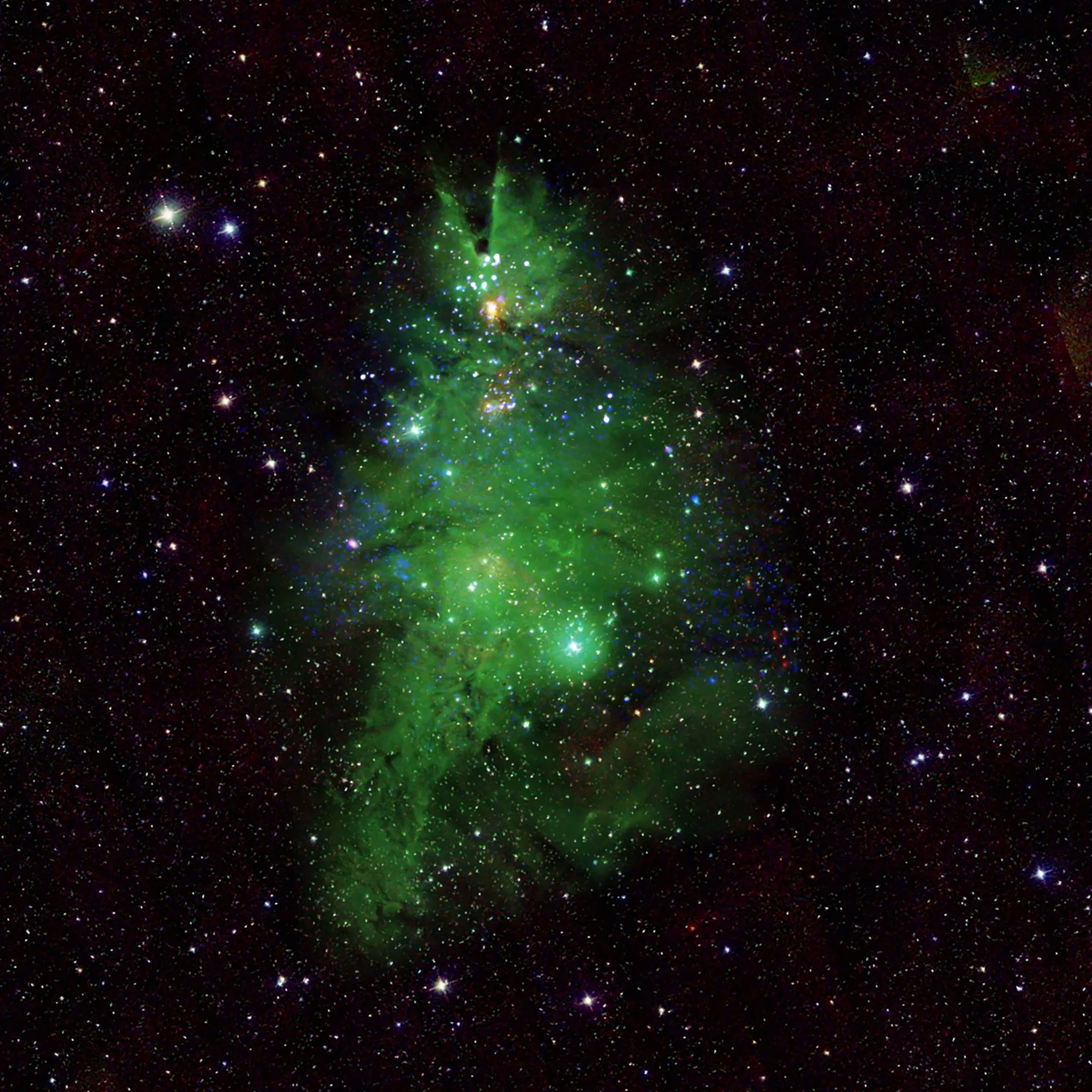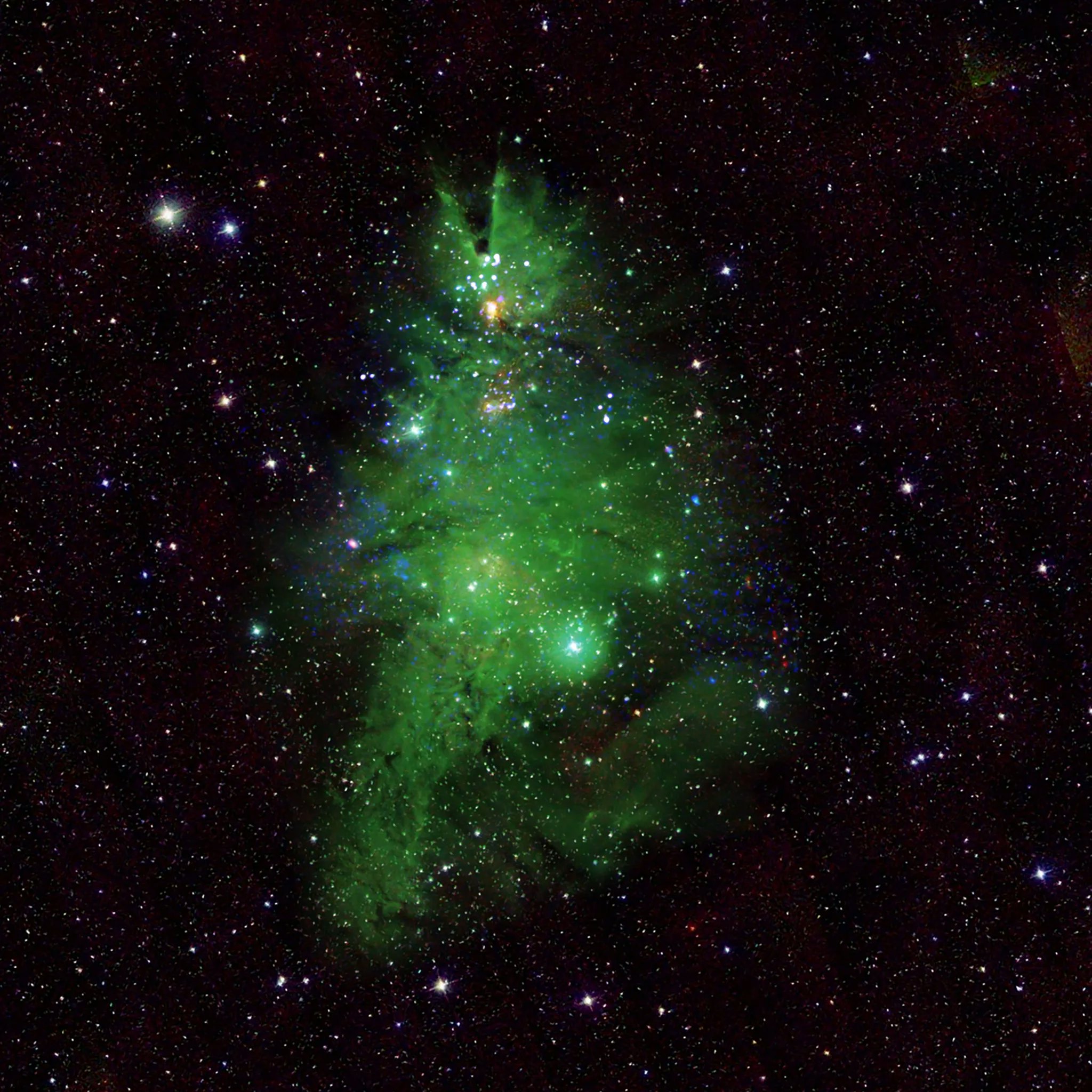
The Milky Way is delivering some holiday cheer in a new image and video NASA published Tuesday.
Young stars clustered together some 2,500 light years from Earth are creating a Christmas tree in space. With a little help from telescopes of different specialties that show phenomena beyond what we could normally see with our eyes, a busy stellar nursery glows with festive illumination.
The Christmas Tree Cluster, officially known as NGC 2264, is made of stars about one to five million years old. That’s young by cosmic standards. Some of these juveniles are less than a tenth of the mass of the Sun, but others would dwarf our nearby star with their hefty sizes of up to seven solar masses. Altogether, their visible light, their X-ray emissions, and their infrared glow make up the space agency’s holiday image.

Capturing Holiday Magic
“This new composite image enhances the resemblance to a Christmas tree through choices of color and rotation,” NASA’s image description says.
The tree itself is made of gas in the nebula. The National Science Foundation’s WIYN 0.9-meter telescope on Kitt Peak in Arizona captured this glow, appearing in visible light. This region was colored green, however, to fit the Christmas theme (sometimes the nebula is given purple and pink colors, too). The boreal shape also pops out because the image is turned to show a vertical tree. It’s rotated clockwise by about 160 degrees from standard North.
The accompanying video shows synchronized flashes that look like Christmas tree lights. This is artificial, to an extent. The young stars emit volatile phenomena into space, like flares, which astronomers saw with NASA’s Chandra X-Ray Observatory. The stars do create these flashes, which show up in NASA’s data. But, they aren’t synchronized. That’s added for the holiday effect.
The perpetual white lights in this image are stars aglow in the infrared, observed with the Two Micron All Sky Survey in Arizona and Chile.
Science literacy is possible when people can learn more about the world around us. Presentations like this Christmas edit of a crowded cosmic corner may be an effective tool in spreading both astronomy knowledge — and holiday cheer.







